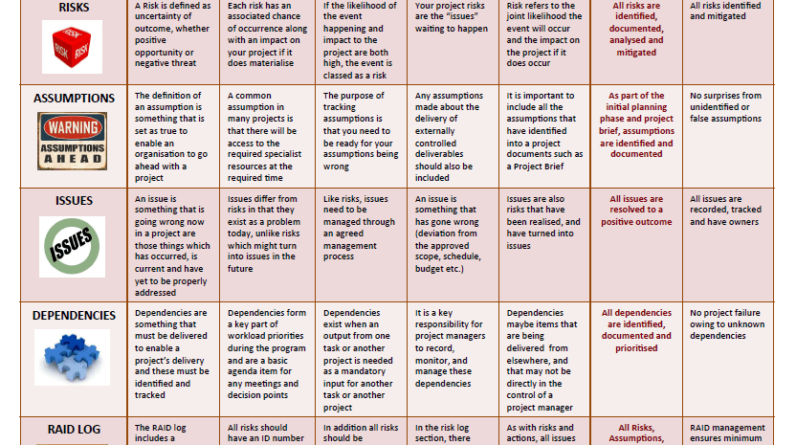
Have you ever wondered what RAID project management is all about? In this article, we will demystify the concept for you in a friendly and accessible manner. RAID, which stands for Risks, Assumptions, Issues, and Dependencies, is a vital framework used in project management to identify and manage potential obstacles and their impacts. It helps project managers stay proactive and prepared, preventing unnecessary disruptions and setbacks. So, let’s dive into the world of RAID project management and unlock its secrets together!
Understanding RAID in Project Management
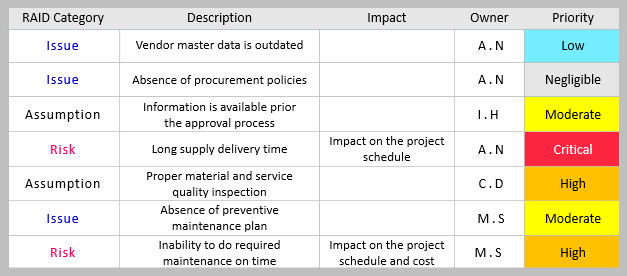
What is RAID in project management
RAID is an acronym that stands for Risk, Issue, Action, and Decision. In project management, RAID refers to a systematic approach used to identify, manage, and mitigate risks and issues that may arise during the course of a project. It is a valuable tool that helps project managers stay organized, proactive, and prepared to address any challenges that may come their way.
Why RAID is important in project management
RAID is crucial in project management because it allows you to effectively identify and manage potential risks and issues, ensuring that your project stays on track and is completed successfully. By incorporating RAID into your project management process, you are able to anticipate and mitigate any obstacles or problems that may arise, minimizing the impact on project timelines, budgets, and overall success.
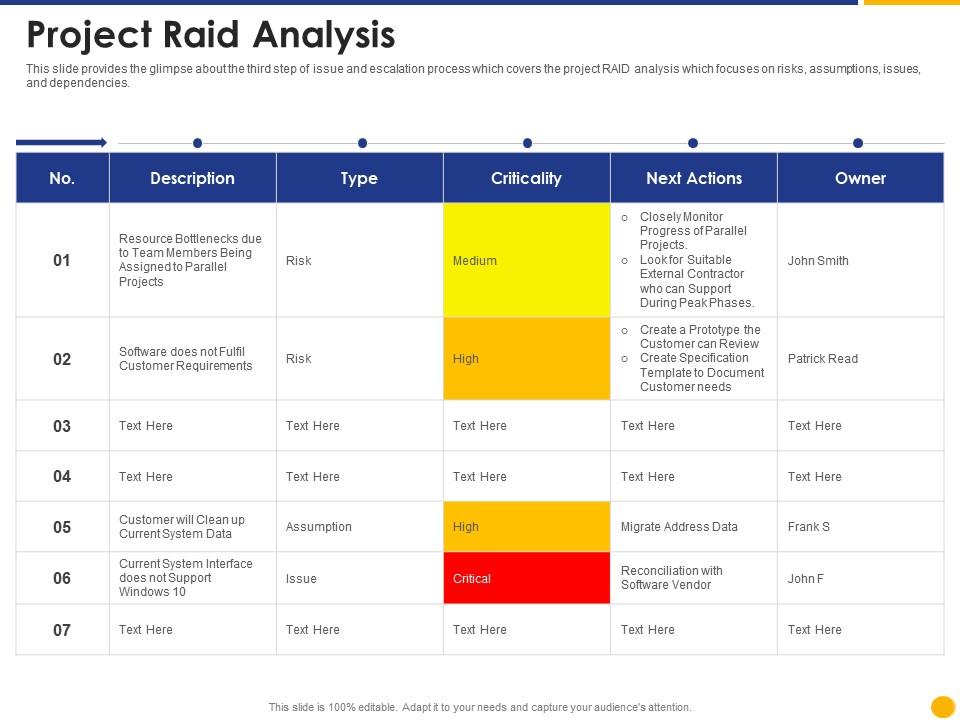
Different types of RAID in project management
Risk management in project management
Risk management is a fundamental aspect of project management. It involves identifying potential risks that could impact the project, assessing their probability and potential impact, and devising strategies to mitigate or avoid them. By proactively managing risks, project managers can minimize their negative impacts and maximize project success.
Issue management in project management
Issue management focuses on addressing problems or challenges that have already occurred. It involves identifying, documenting, and resolving issues as they arise, ensuring that they are effectively managed and do not impede project progress. Effective issue management requires prompt and efficient communication, problem-solving skills, and a proactive approach to finding solutions.
Action management in project management
Action management involves identifying and assigning specific actions or tasks to individuals to address risks or issues identified in the project. It ensures that the necessary steps are taken to mitigate risks or resolve issues, and that individuals are held accountable for their assigned actions. By having a structured approach to action management, project managers can drive progress, ensure accountability, and keep the project moving forward.
Decision management in project management
Decision management involves making informed and timely decisions during the project lifecycle. This includes decisions related to risk mitigation strategies, issue resolution options, resource allocation, and overall project direction. Effective decision-making requires a comprehensive understanding of the project goals, stakeholder input, and consideration of potential impacts on project outcomes.
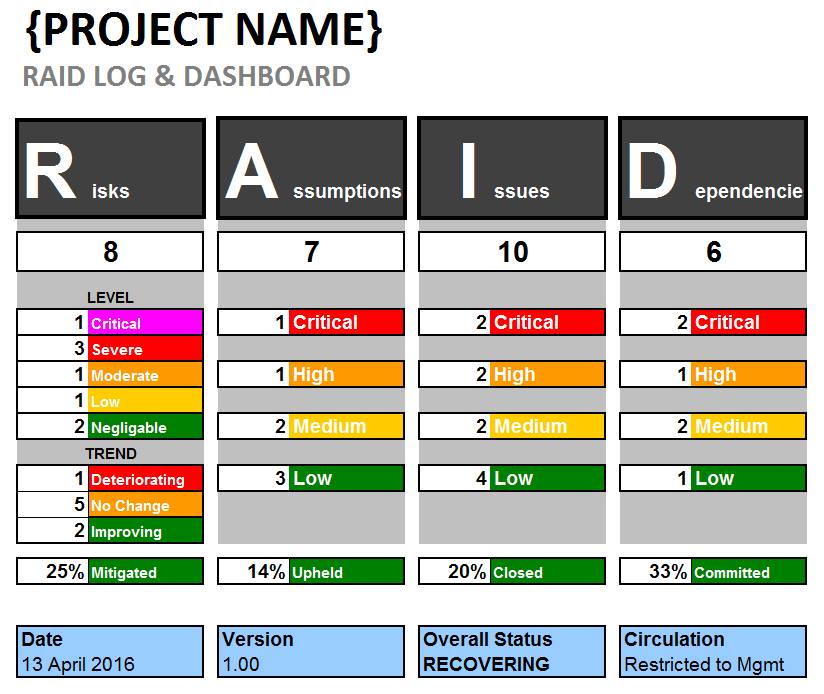
Advantages of using RAID in project management
Using RAID in project management offers several advantages that contribute to the overall success of a project:
-
Improved risk identification: RAID helps project managers identify potential risks early on, allowing for proactive risk management and mitigation strategies.
-
Enhanced issue resolution: The systematic approach of RAID ensures that issues are promptly identified, documented, and resolved, preventing them from escalating and causing significant disruptions to the project.
-
Effective action tracking: RAID ensures that specific actions are assigned to individuals, facilitating accountability and progress tracking, thereby keeping the project on schedule.
-
Informed decision-making: RAID provides a framework for making informed decisions by considering the potential impact of risks and issues, facilitating better decision-making throughout the project.
-
Mitigated impact of risks and issues: By managing risks and issues, RAID reduces the potential negative impact on project timelines, budgets, and overall success, ensuring a smoother project delivery.
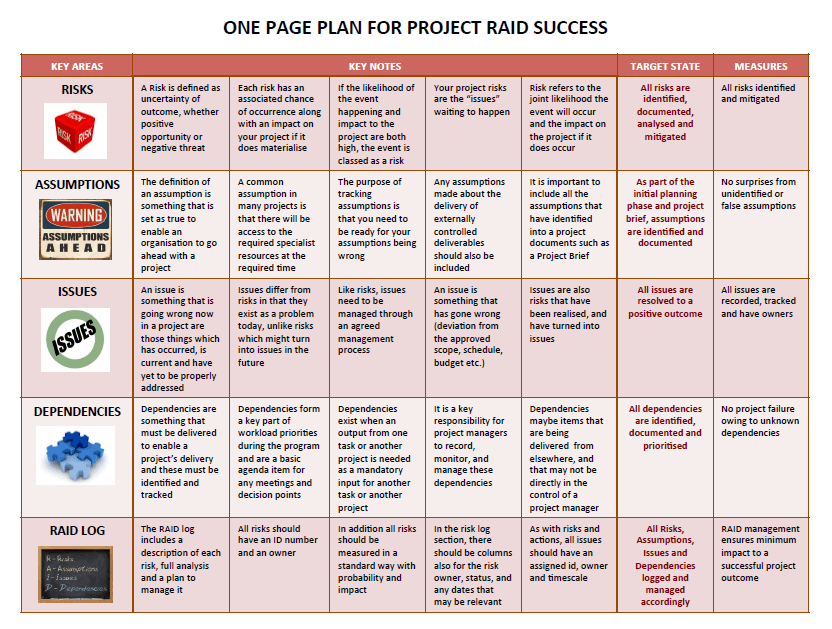
Disadvantages of using RAID in project management
While RAID offers numerous benefits, it is essential to be aware of the potential drawbacks:
-
Time-consuming: Implementing RAID in project management requires time and effort to identify, document, and manage risks, issues, actions, and decisions. This can sometimes increase the administrative burden on project managers and team members.
-
Data overload: RAID generates a significant amount of data, ranging from risk registers to issue logs. Managing and analyzing this data effectively can be challenging, particularly in complex projects with multiple stakeholders.
-
Lack of flexibility: Strict adherence to RAID can lead to rigidity in decision-making processes, preventing project managers from adapting to unforeseen circumstances or unique project requirements. Flexibility and creativity may be limited when strictly following a predefined approach.
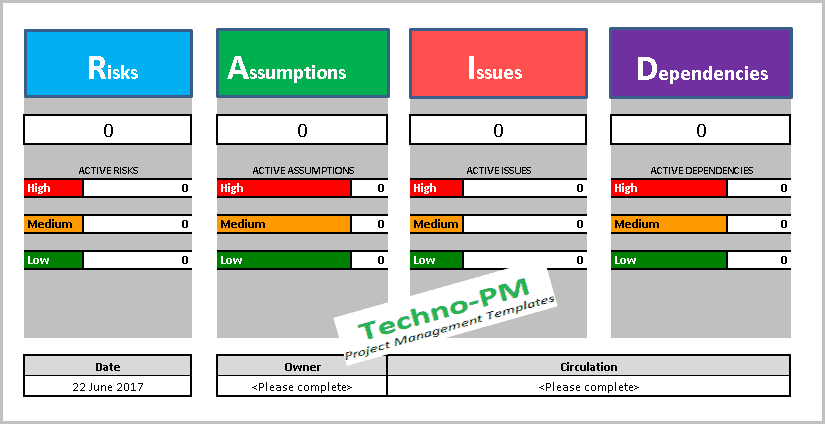
Best practices for implementing RAID in project management
To maximize the benefits of RAID and overcome its potential disadvantages, consider the following best practices:
-
Tailor RAID to your project: Adapt the RAID approach to suit the scope, complexity, and specific needs of your project. A one-size-fits-all approach may not be effective, so customize and prioritize the elements that are most relevant and impactful.
-
Engage stakeholders: Involve relevant stakeholders, team members, and subject matter experts in the RAID process. Their input and expertise can help identify risks, issues, and appropriate actions, leading to more effective decision-making.
-
Regular reviews and updates: Continuously review and update the RAID documentation throughout the project lifecycle. Risks and issues may change, and actions or decisions may need modification based on evolving circumstances. Regular reviews ensure the RAID remains up-to-date and relevant.
-
Communication and transparency: Maintain open and transparent communication channels to facilitate the effective management of RAID elements. Regularly communicate the status of risks, issues, and actions to stakeholders, keeping everyone informed and aligned.
-
Maintain flexibility: While following a structured approach is important, maintaining flexibility is equally crucial in managing unexpected risks and issues. Be open to revisiting decisions or adapting actions when necessary, to ensure a smooth project delivery.
In conclusion, RAID is an invaluable tool for project managers, helping them effectively manage risks, issues, actions, and decisions throughout the project lifecycle. By incorporating RAID into project management practices, projects are better equipped to stay on track, minimize disruption, and achieve successful outcomes.







